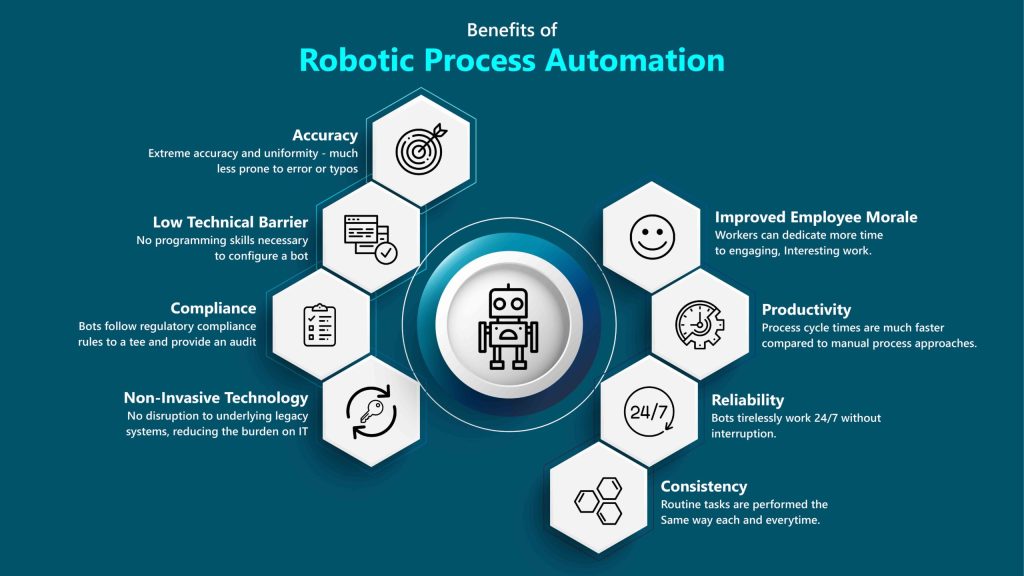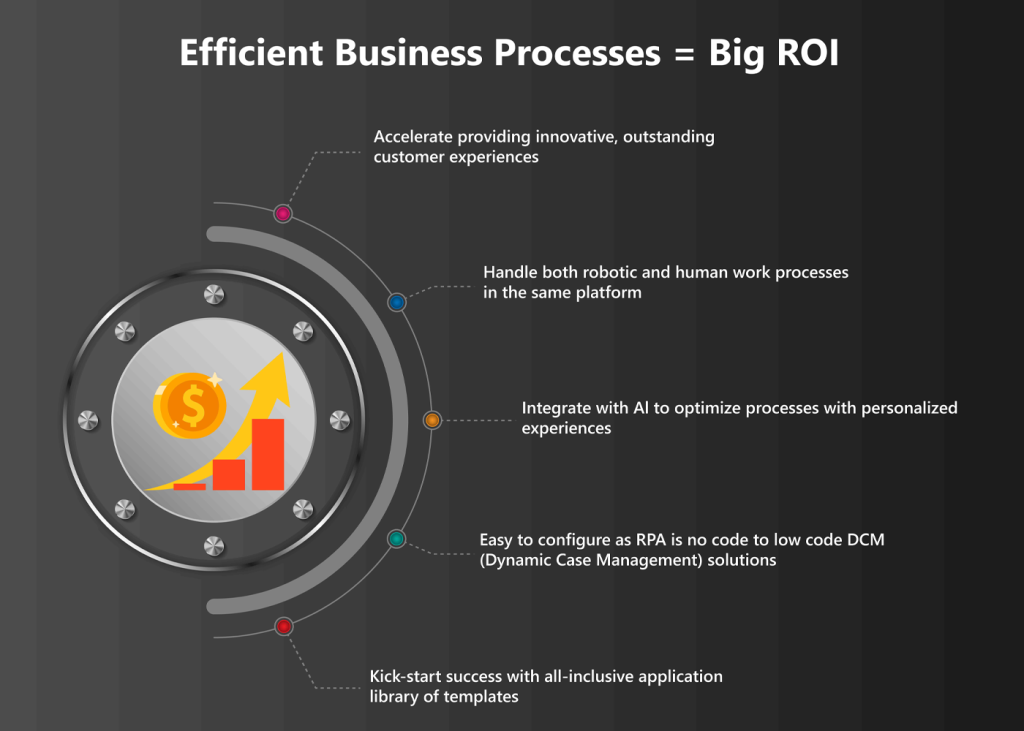Robotic Process Automation (RPA) is being incorporated in several business processes, thanks to its ability to emulate human and digital interactions. It is best suited for processes with repeatable, predictable interactions with IT applications.
The robots take over routine processes by mimicking the way humans interact with applications through a user interface and follow simple rules to arrive at decisions.
Unlike a human, RPA bot can work more efficiently and quickly than most humans can. This brilliant combination of human-like interactions and software-like accuracy make robotic process automation an ideal technology at a time when the business landscape has become increasingly competitive.
Today businesses realize that technology is the backbone of their growth. CIOs are looking to emerging technologies to improve operations and reduce costs. RPA is filling this need by serving as an invaluable resource for streamlining operations. With RPA, employees can save up on the time spent on mundane tasks and indulge in meaningful work.
Table of Contents
Unparalleled benefits of RPA that will power up your business

Despite being a hot topic, most enterprises still struggle to fully grasp the real potential of RPA. In addition to being user-friendly and cost effective, robotic process automation offers a host of other benefits. Let’s look at a few advantages and RPA solutions that are drawing attention from organizations across different industries.
- Increased accuracy: Bots are highly consistent and accurate – they are much less likely to making mistakes compared to a human resource. This can be leveraged for processes such as setting up or removing user accounts, copying information from one system to another, onboarding and off-boarding employees or populating forms.
- Meet regulatory compliance standards: Bots are designed to follow the instructions they have been configured to follow and supply an audit trail history for each step. The feature of RPA is well suited for organizations looking to meet strict compliance standards.
- No interruption of work: Bots can work round the clock without requiring any intervention from employees to re-activate them.
- Existing systems are still in place: Bots work directly from a user interface, hence do not require any changes to the systems you already use every day. This makes RPA especially useful for integrating legacy in situations where organizations do not have the time or resources to develop custom code-based integrations.
- Improved employee morale and experience: With robotic process automation, employees can devote more of their time and talent to meaningful work. While bots take up mundane tasks like fill out forms, enter data and look up information from websites, employees can use much of their time to focus on high-impact projects that drive growth.
- Increased productivity: Process cycle times are more efficient and can be completed at a faster speed compared to manual processes.
[hbupro_banner id=”21468″]
Applications and use cases of RPA in various industries
The application of RPA process has proven to yield positive results on the business productivity. Its adoption has grown tremendously – at a rate than ever before. For sectors like insurance, banking, and financial services, RPA remains as the most preferred business service with more enterprises now appreciating and investing in the technology. In fact, the range of sectors now adopting RPA is also growing and expanding to include utilities, manufacturing, hospitality, and mining, among others.
Let us highlight RPA use cases and RPA applications in various industries:
Factors that accelerate business ROI with Robotic process automation
Undeniably, the adoption of RPA is on the rise due to its capability to deliver rapid ROI and the fact that it allows for increased control over operations. However, for a holistic and clearer understanding, it does no good to measure the ROI of RPA adoption with just financial gains. To understand the whole capability of the RPA automation, one needs to widen their approach more so since there are several business benefits to it.
The followings are some specific influences of RPA services on the businesses that boost the ROI:

Features that drive performance and efficiency
The RPA robots include the following key characteristics:
- User-Interface Interaction – The RPA bots can mimic human interaction like entering information into fields; make cursor jumps, push buttons, and so on. The script of the robot includes conditions and rules to pretend actual user behaviour. Businesses can either develop the scripts with bot developers or record directly on the system with the RPA technology.
- Process Execution – The RPA robot can run processes exactly like humans including user interface interaction.
- High Volume Data Handling – The RPA bot can handle high volumes of data in the user interface and process interaction. They transport and use data from external storage or from a user interface.
- Learning Capability – Advanced RPA bot can integrate with AI and machine learning algorithms. Machine learning allows the robots to automatically absorb and learn from experience. Therefore, the developers do not need to write any scripts.
[hbupro_banner id=”21467″]
Successful implementation of RPA in an enterprise
Like other initiatives, RPA requires planning and management. It is essential to consider the context as well as the organizational benefits. An organization that successfully wants to implement RPA must have the business sit closer to IT. In this way, the value of RPA can be communicated more clearly. The lack of alignment between the two groups can lead to frustration, insecurity, and a limited view on the new technology.
But, achieving alignment between business-IT is not easy. CIOs can consider the following practices for better coordination –
- Think of all business units as strategic and continuous loop. Teams will have to function more closely to grasp the needs of NPA better. This will enable engagement, reduce risk and improve efficiency.
- In order to achieve the full benefits of RPA, IT IT teams must work closely with business teams so that everyone can learn from one another and understand the full potential of automation from end-to-end.
- Every decision, every person, every unit must work towards improving customer experience. Aligning everyone under a common goal will make it incredibly clear as to what the strategy should be for RPA implementation. Alignment around a clear goal can help break down silos between business and IT teams, further enabling collaboration.
- It is important that both teams use a single language throughout the planning, design, and development phases, thereby facilitating communication.
Today CIOs are the leading force behind implementing new digital transformations and operating models that prepare businesses for the highly competitive landscape. RPA helps to facilitate by improving a variety of business elements and department functions. The productivity of marketing, legal, customer service, financial departments and more, all benefit from the implementation of automation.
[hbupro_banner id=”21469″]













